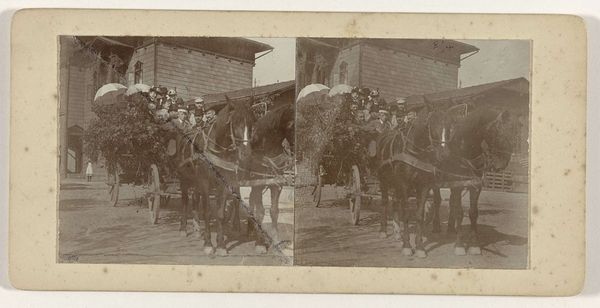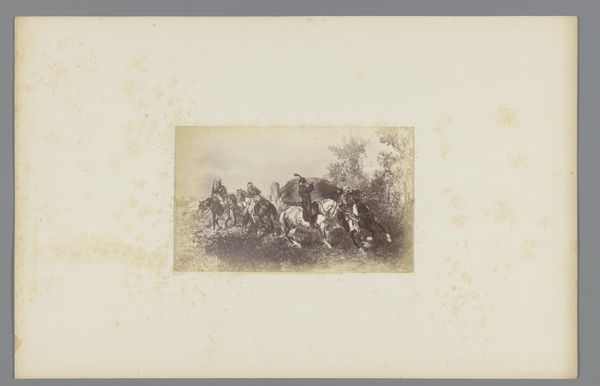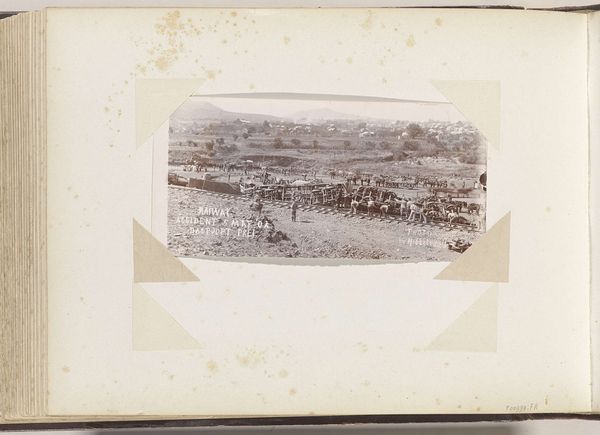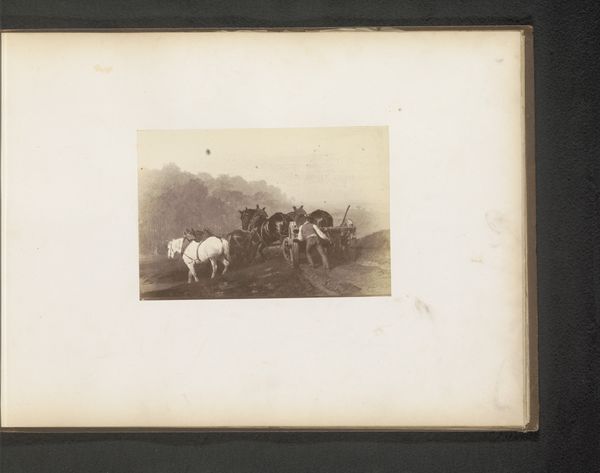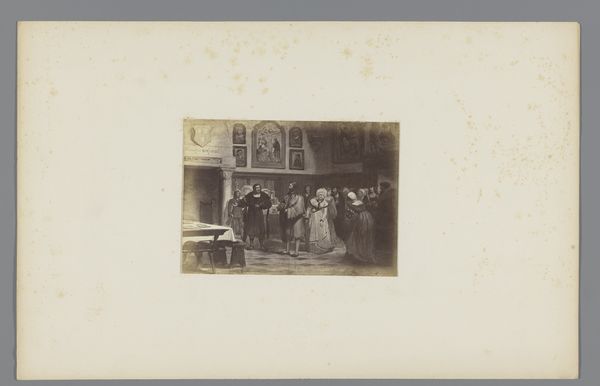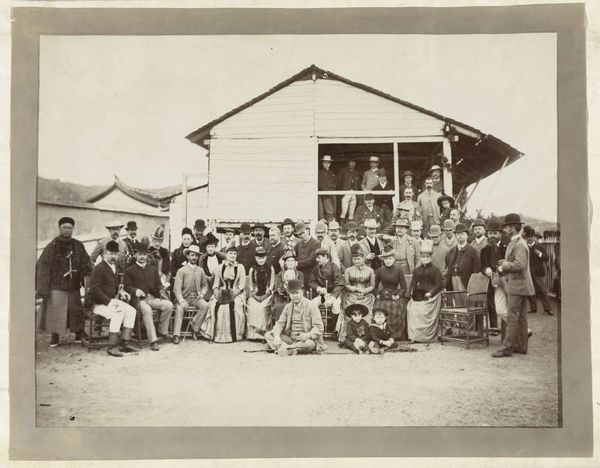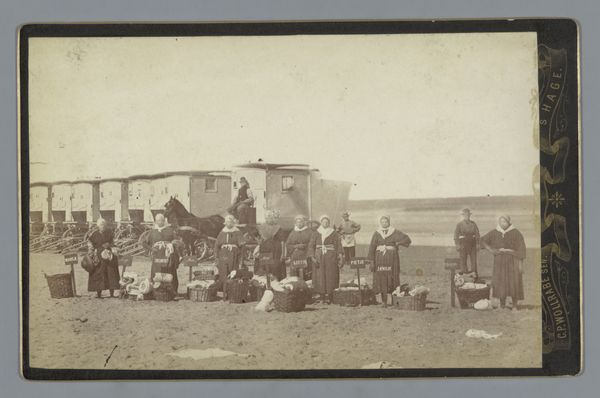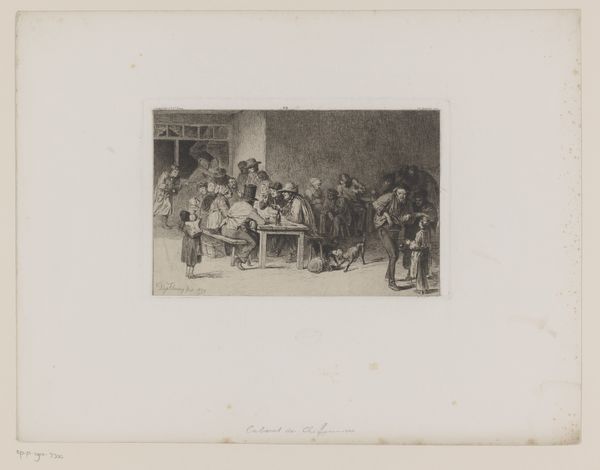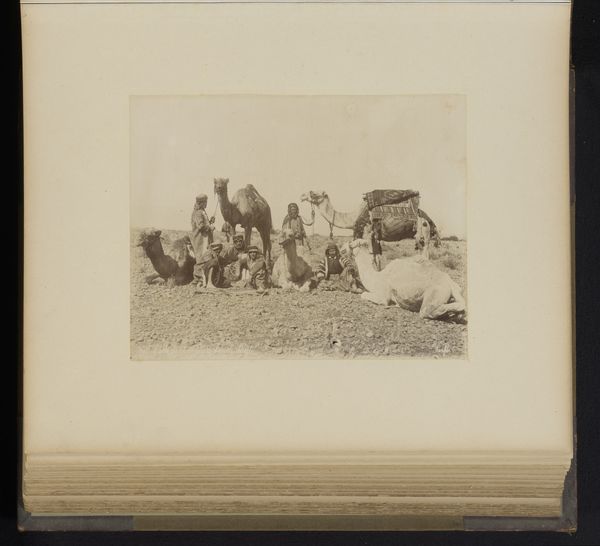
Generaal Piet Cronjé (met zweep in de hand) en zijn eenheid tijdens de belegering van Mafeking 1899
0:00
0:00
photography, gelatin-silver-print
#
portrait
#
photography
#
gelatin-silver-print
#
genre-painting
#
history-painting
Dimensions: height 157 mm, width 217 mm
Copyright: Rijks Museum: Open Domain
Curator: Here we have "Generaal Piet Cronjé (met zweep in de hand) en zijn eenheid tijdens de belegering van Mafeking", a gelatin silver print captured by Barnett & Co. in 1899. It’s a fascinating historical document of the Second Boer War. Editor: My first impression is one of stark reality, of human faces and a crude technology of violence. The image is almost bleached of emotion, despite the heavy subject matter. I am struck by the contrast of all these serious, rough men together, alongside those gleaming cannon shells arrayed in front of the cannon. It evokes a sense of collective resolve, or perhaps forced bravado. Curator: The presence of Cronjé is politically weighted, particularly the symbol of the whip in his hand. During the siege, the Boer forces, including Cronjé's unit, surrounded Mafeking. Lord Baden-Powell masterminded its defense; so this photo carries the heavy socio-political implications of colonial conflict. Editor: The visual symbol of that whip is powerful, not just regarding Cronjé's authority but its implied brutal subjugation and dominance of others. It's as if it embodies not only Boer leadership but also their mindset towards the besieged. We cannot forget that at the siege of Mafeking the defenders ultimately won by mobilizing black soldiers as labour to resist. Curator: Yes, the photograph definitely reflects the power dynamics. But its existence also speaks to the changing face of war and public memory. These photographic portraits were, after all, used to construct heroes, reinforce identity, and promote certain colonial narratives. It became about cementing certain political attitudes. Editor: It's a potent and chilling image in that respect. It carries these visual seeds of cultural conflict and the will to dominate which we now see sprouting in many corners of the world. And, in stark black and white, the photograph suggests history is repeating, and this visual metaphor, embodied in that image, is returning to haunt us again. Curator: A valuable interpretation. Through such historical materials, and photographs like this one, we can start to understand better our present.
Comments
No comments
Be the first to comment and join the conversation on the ultimate creative platform.


